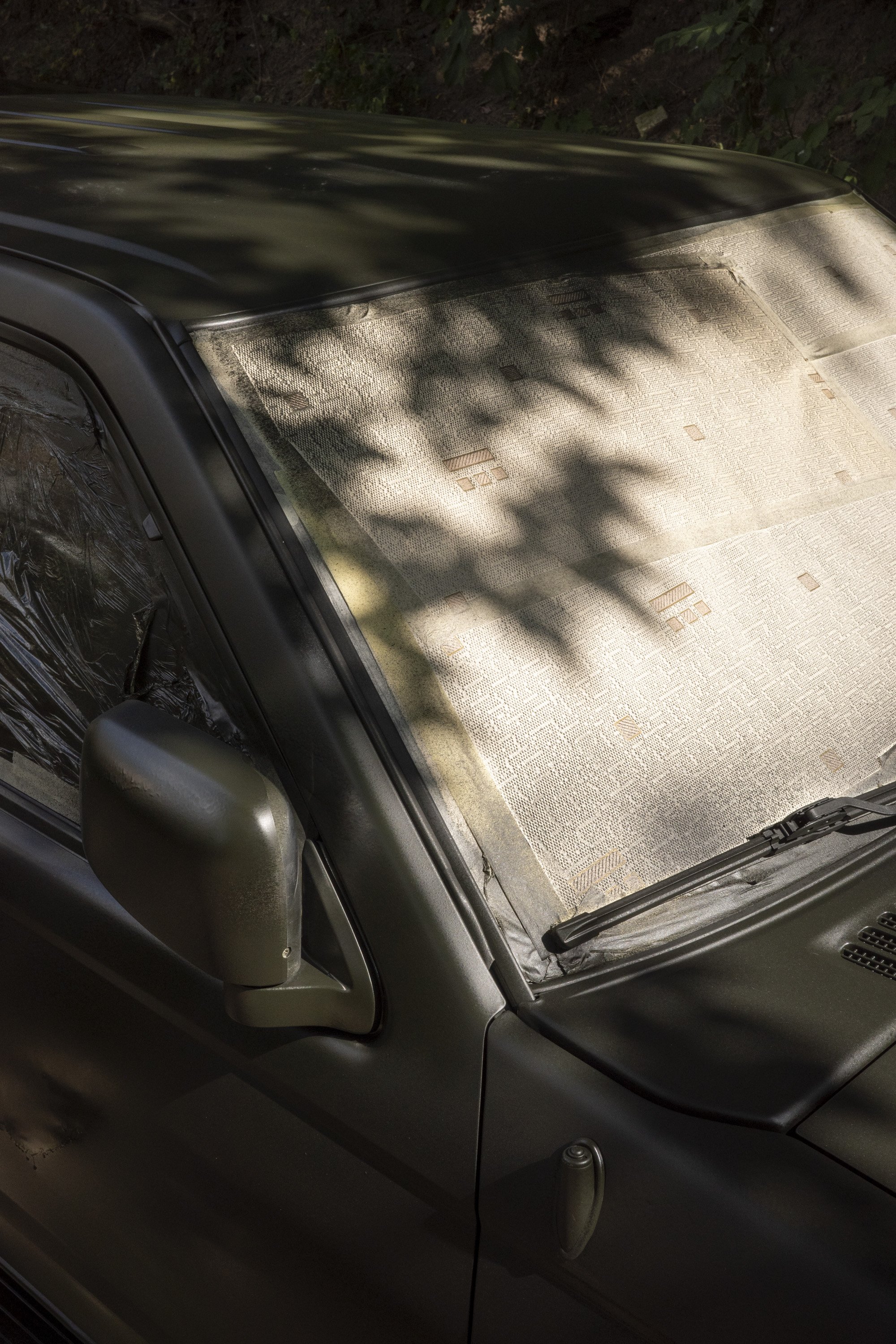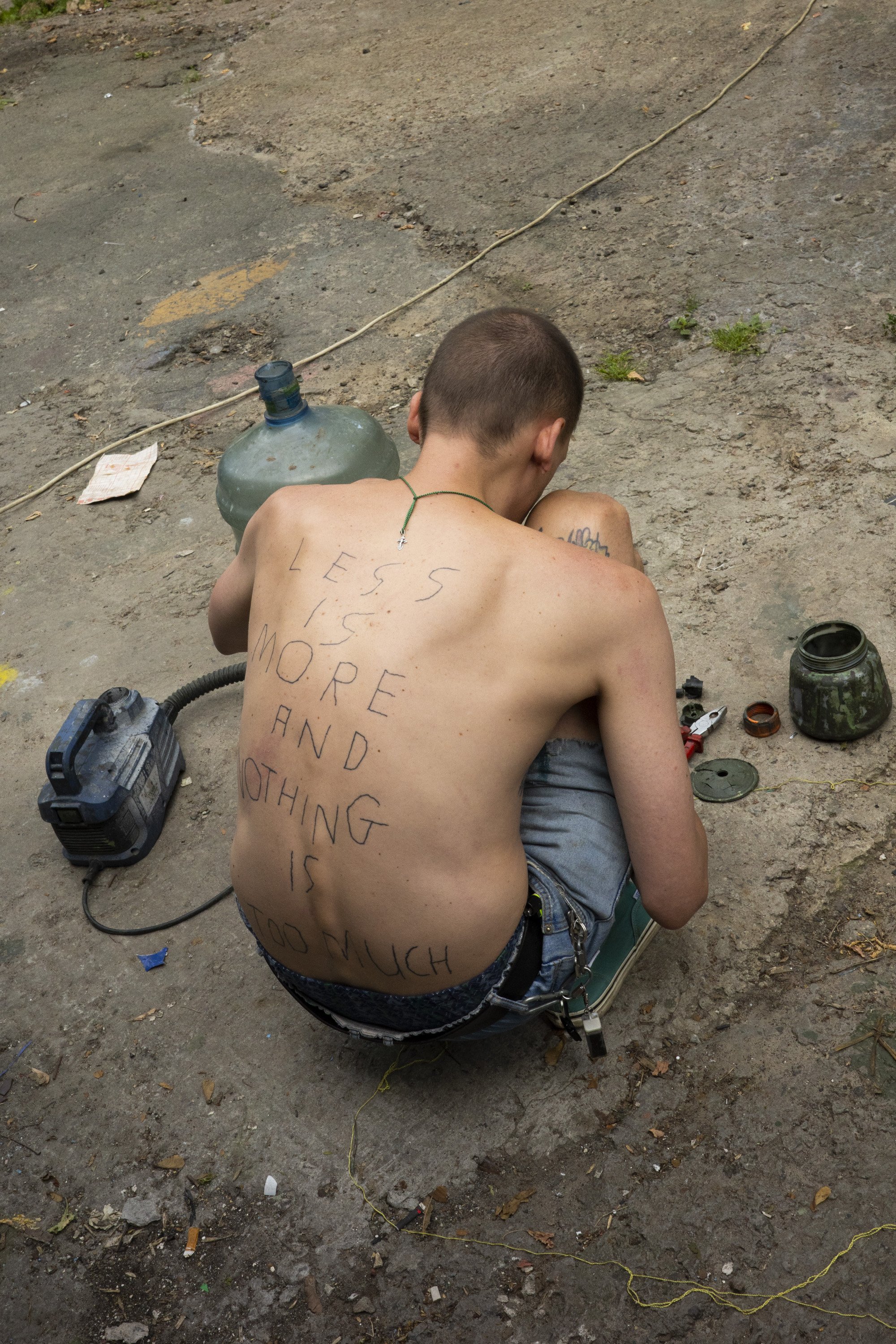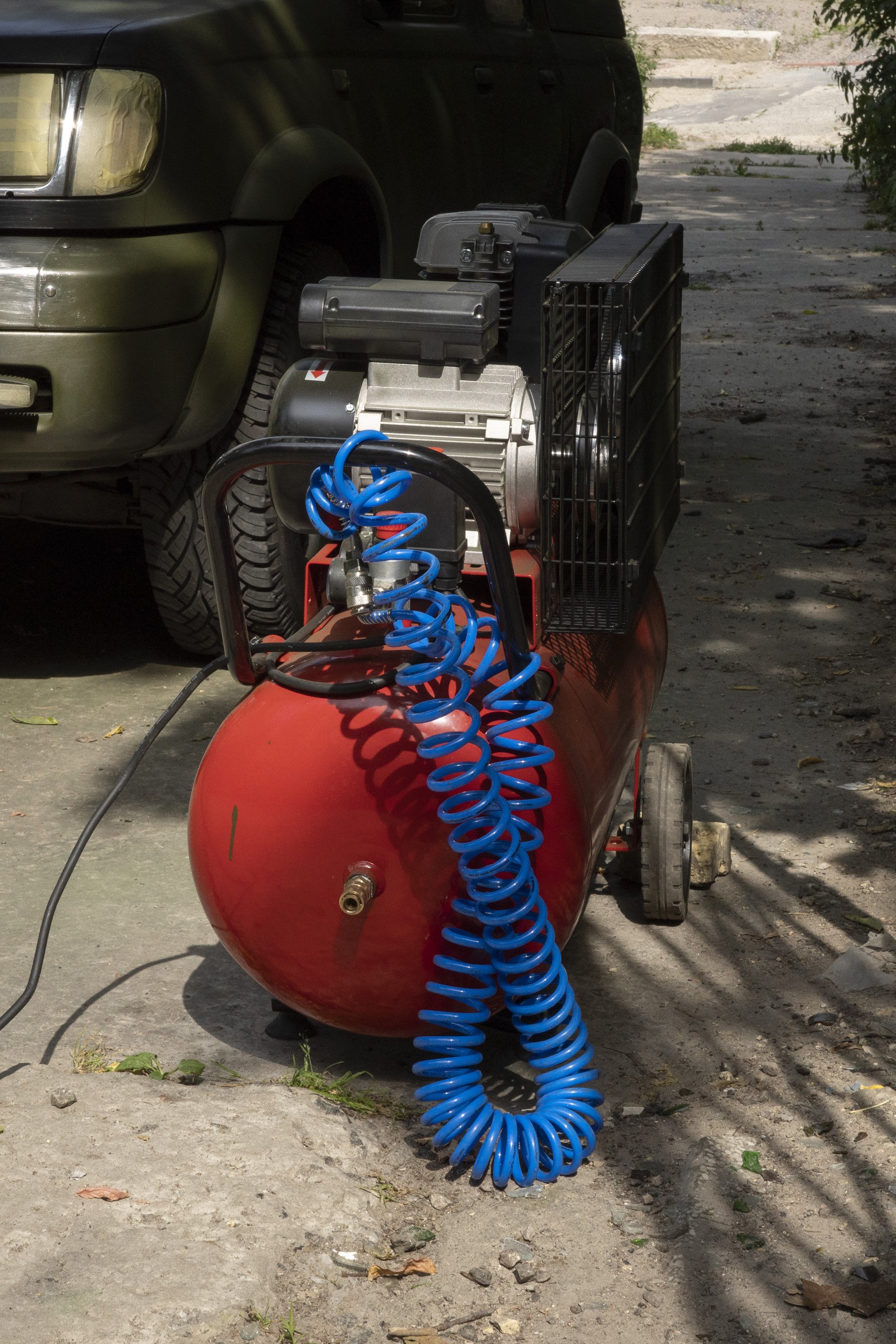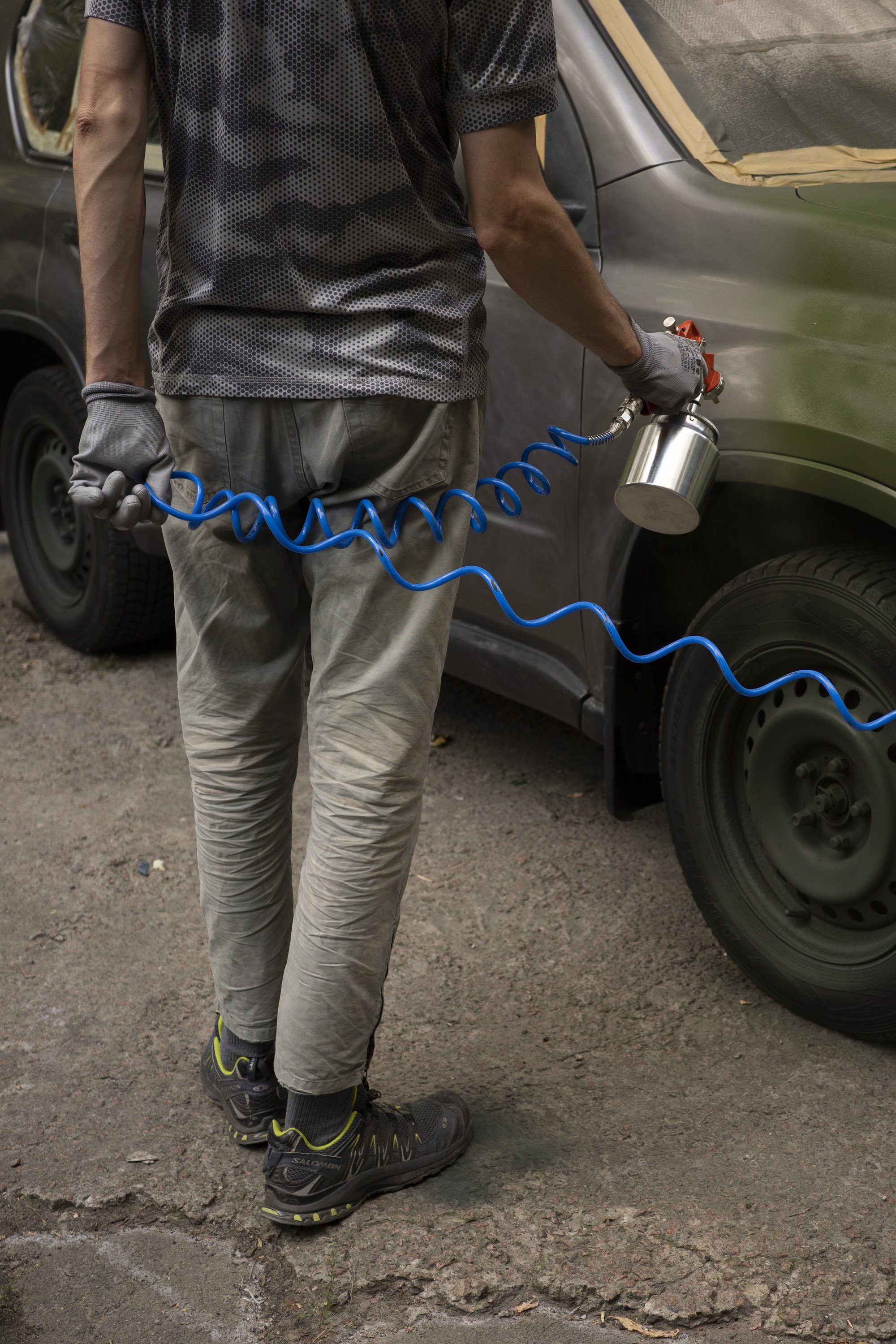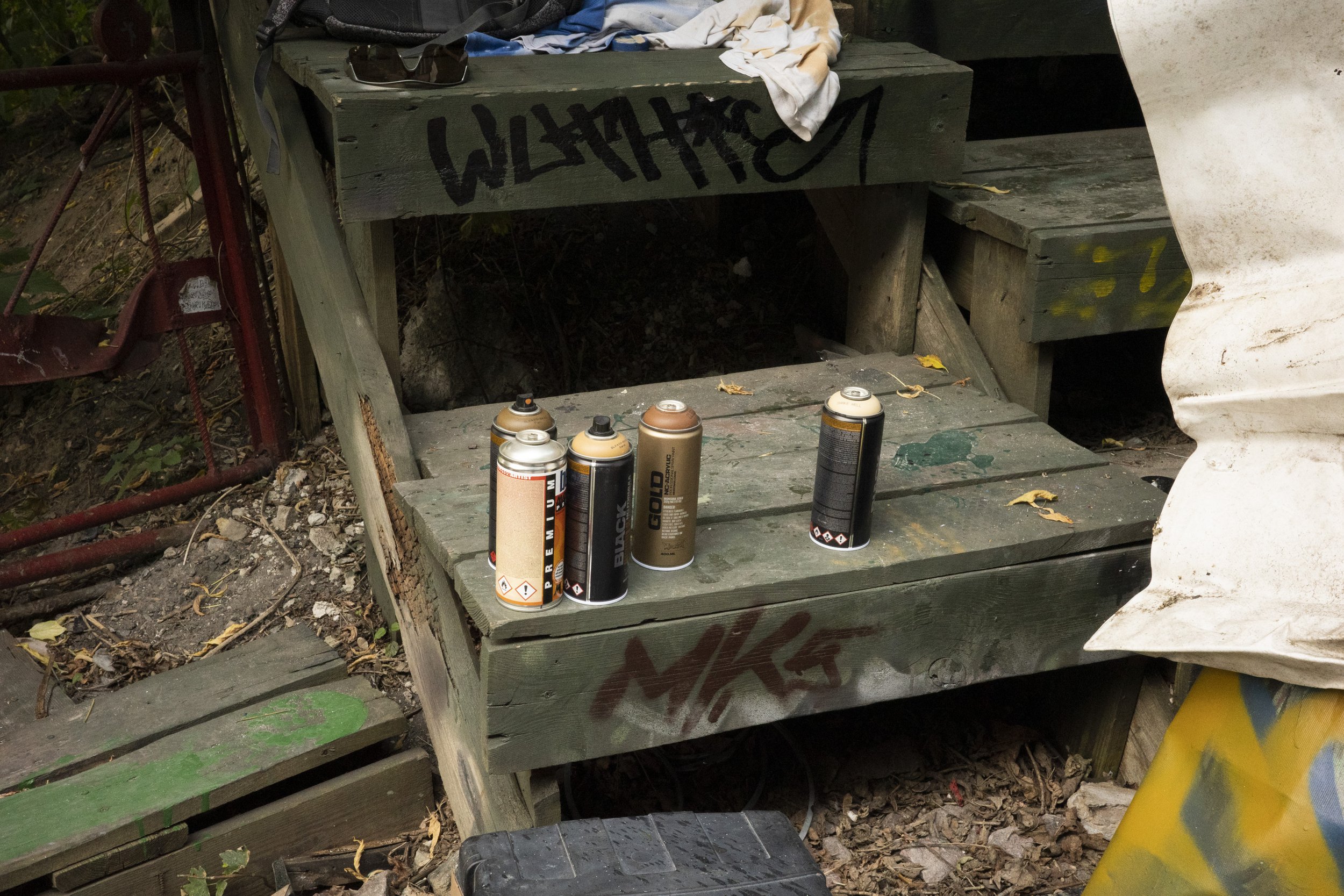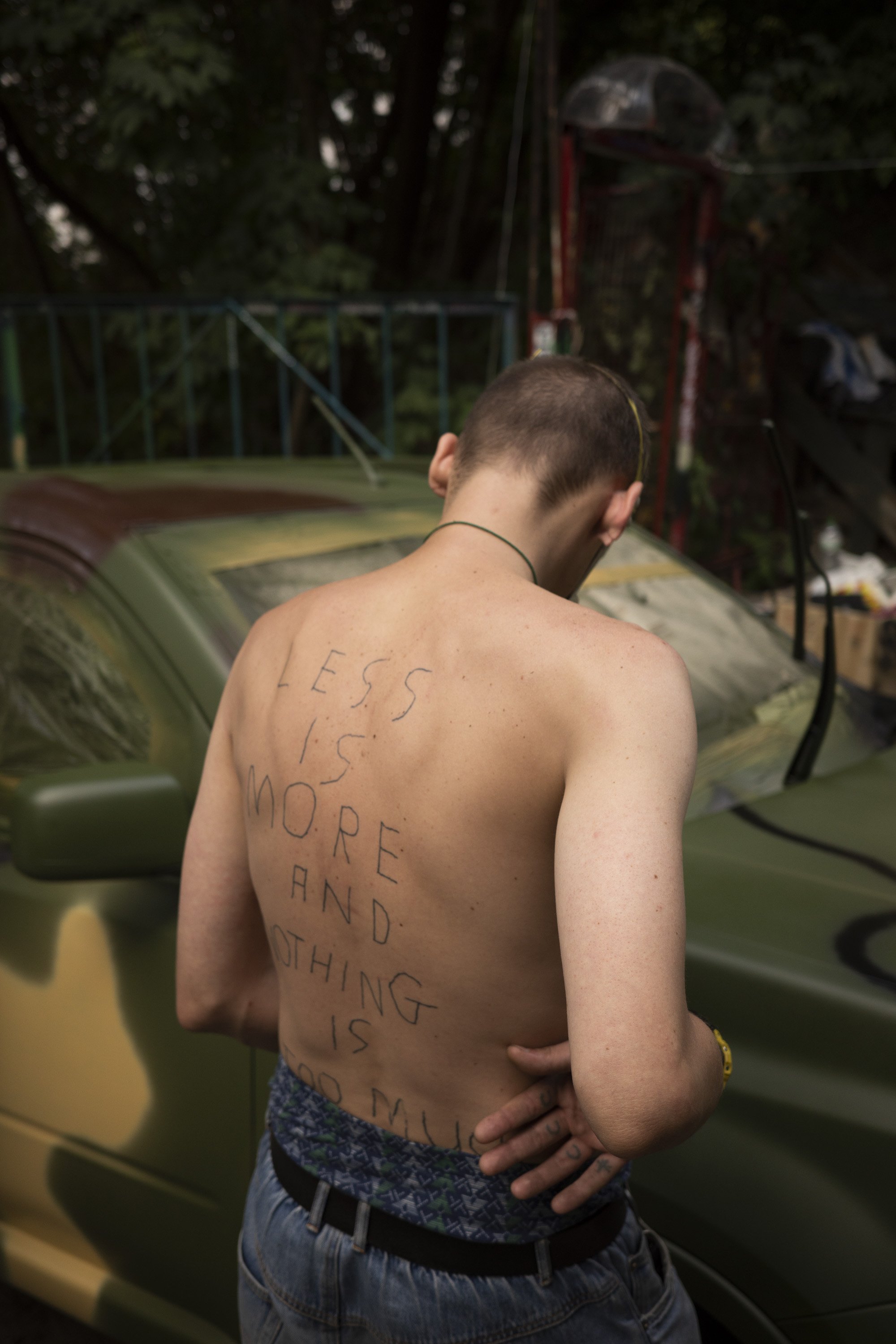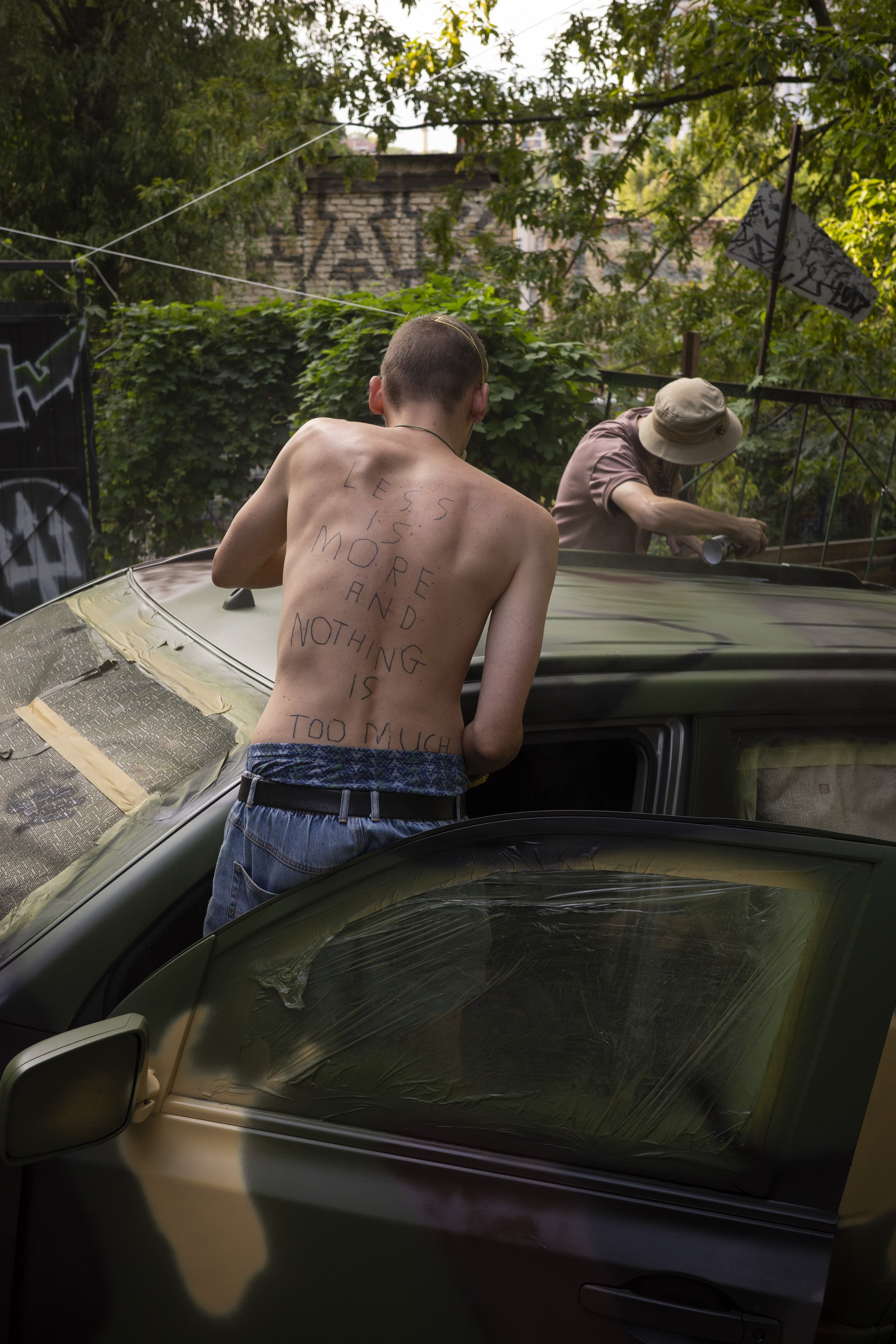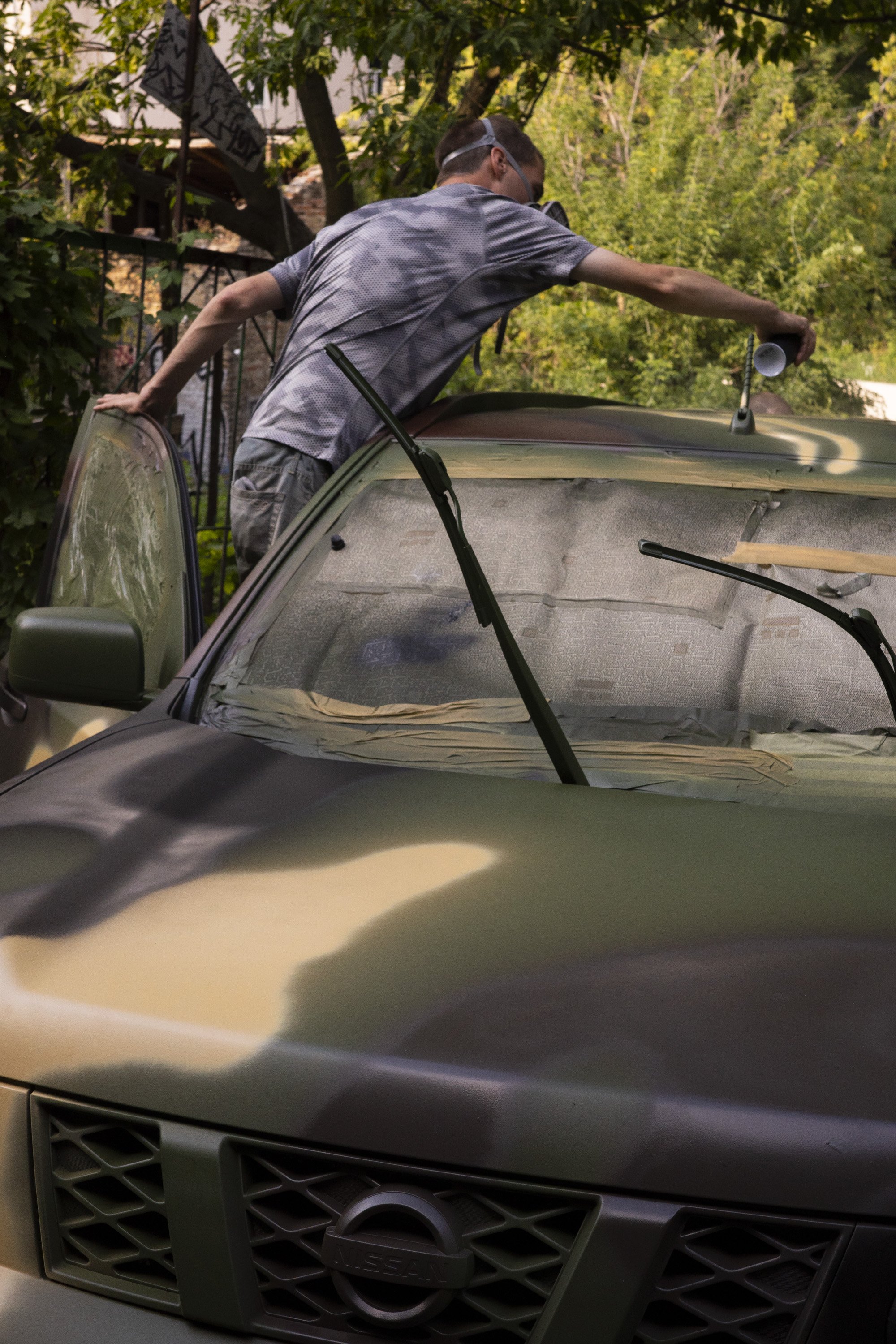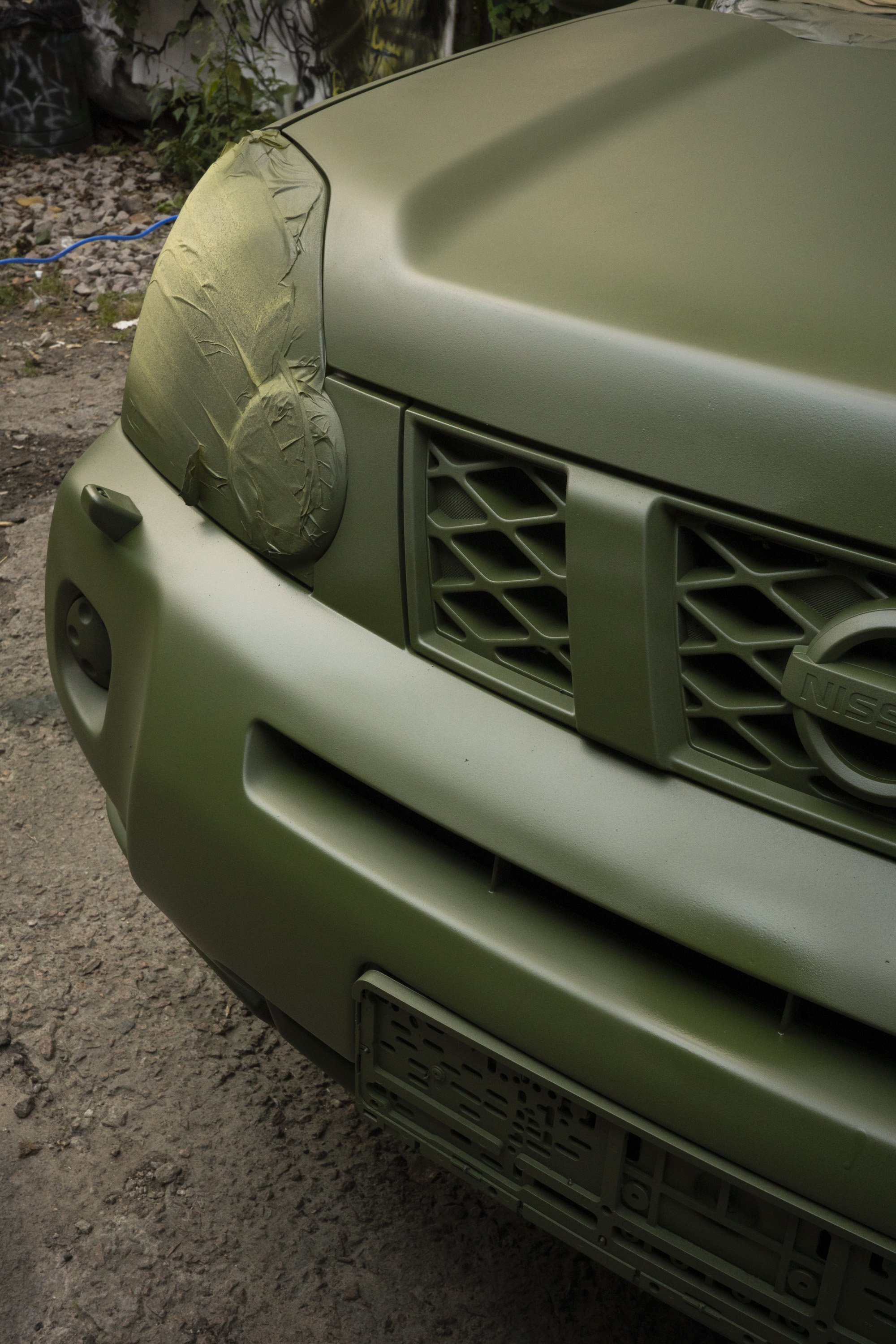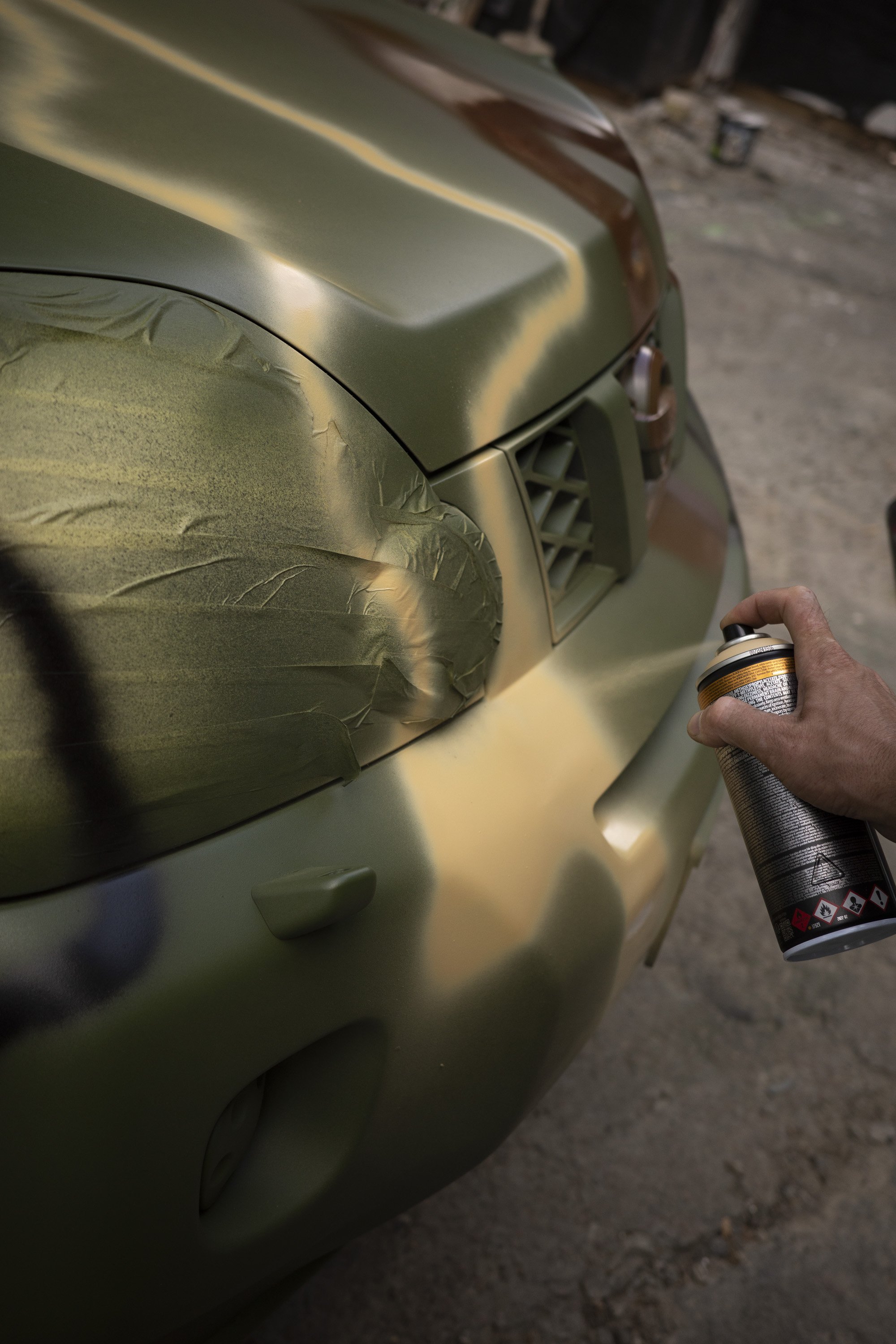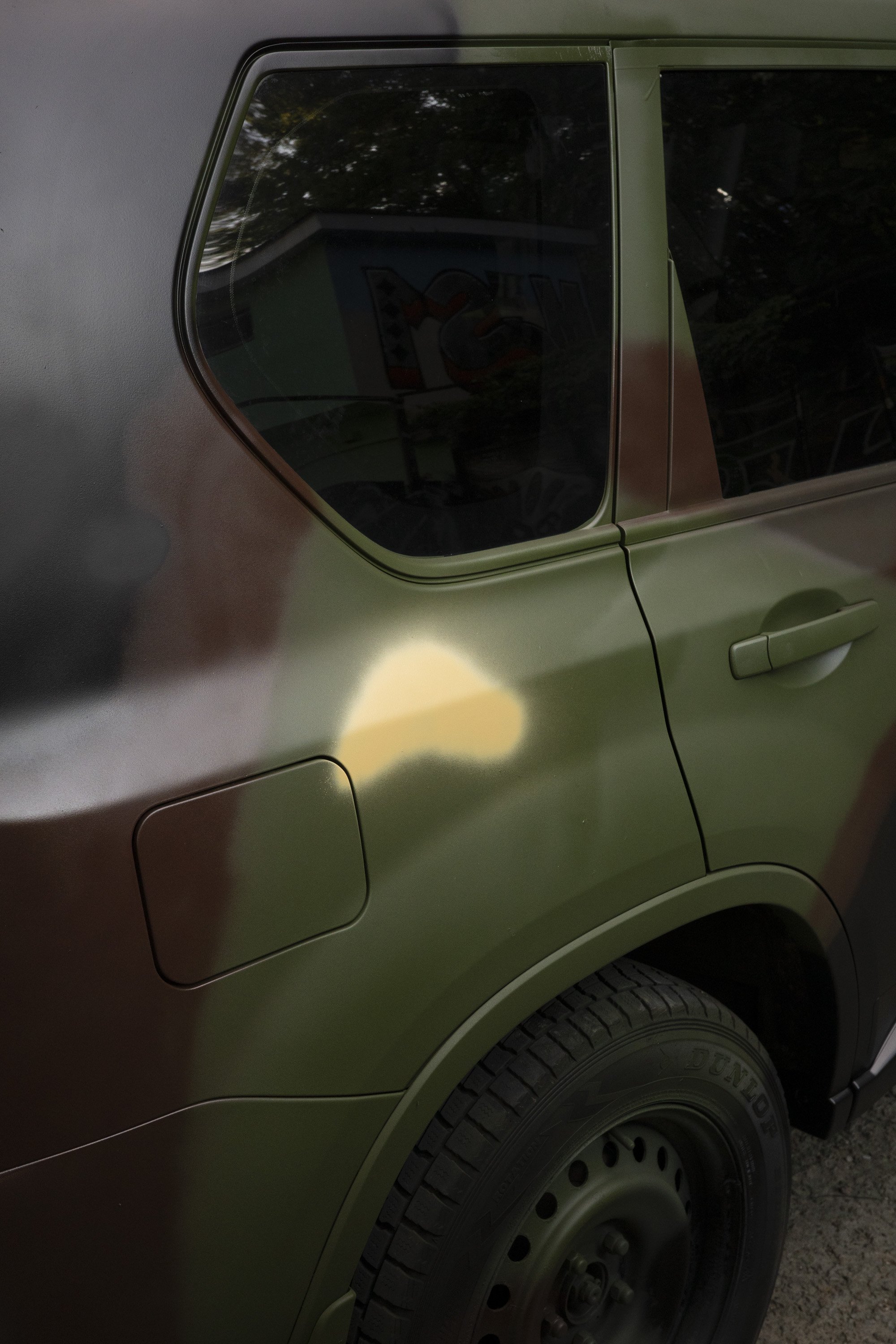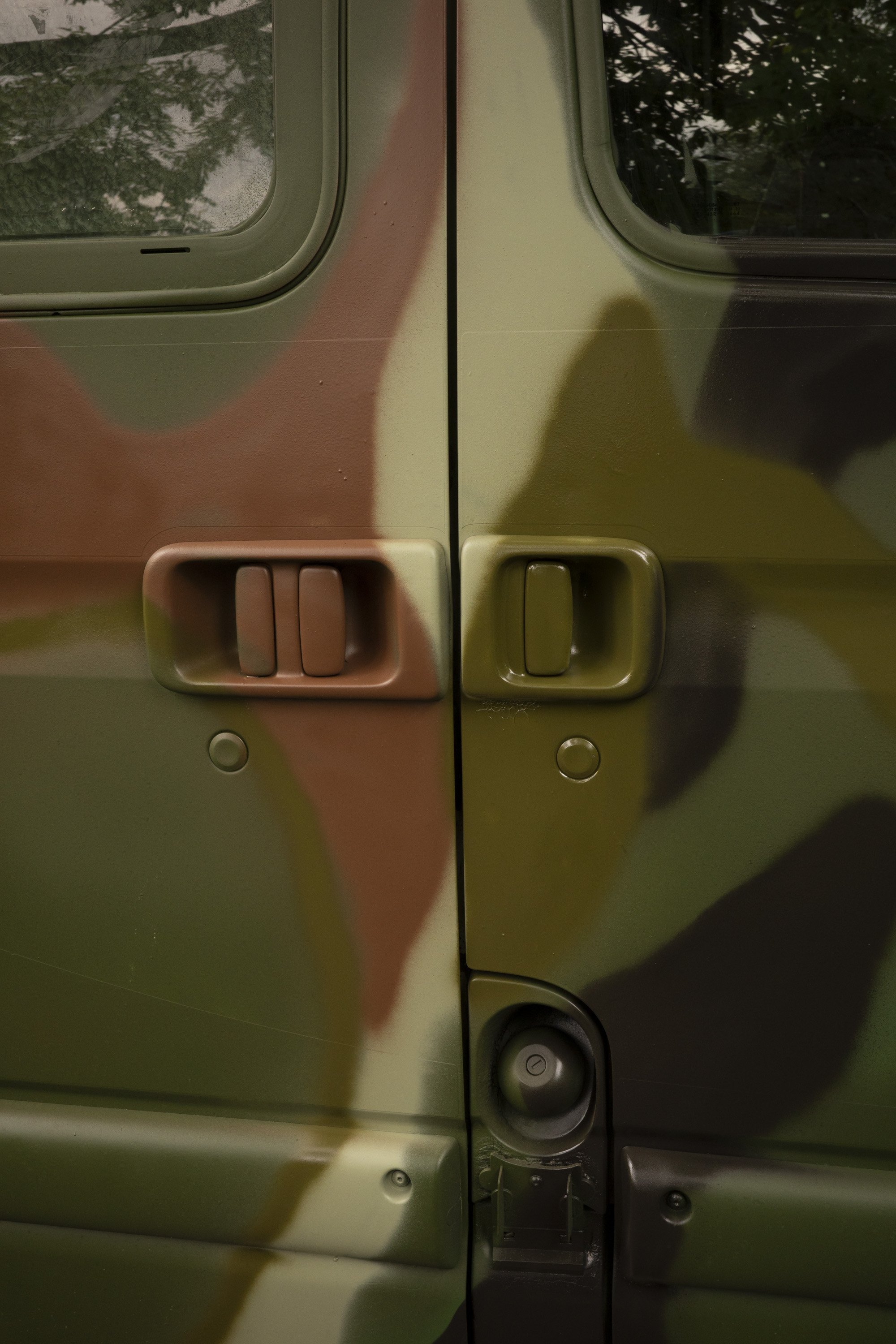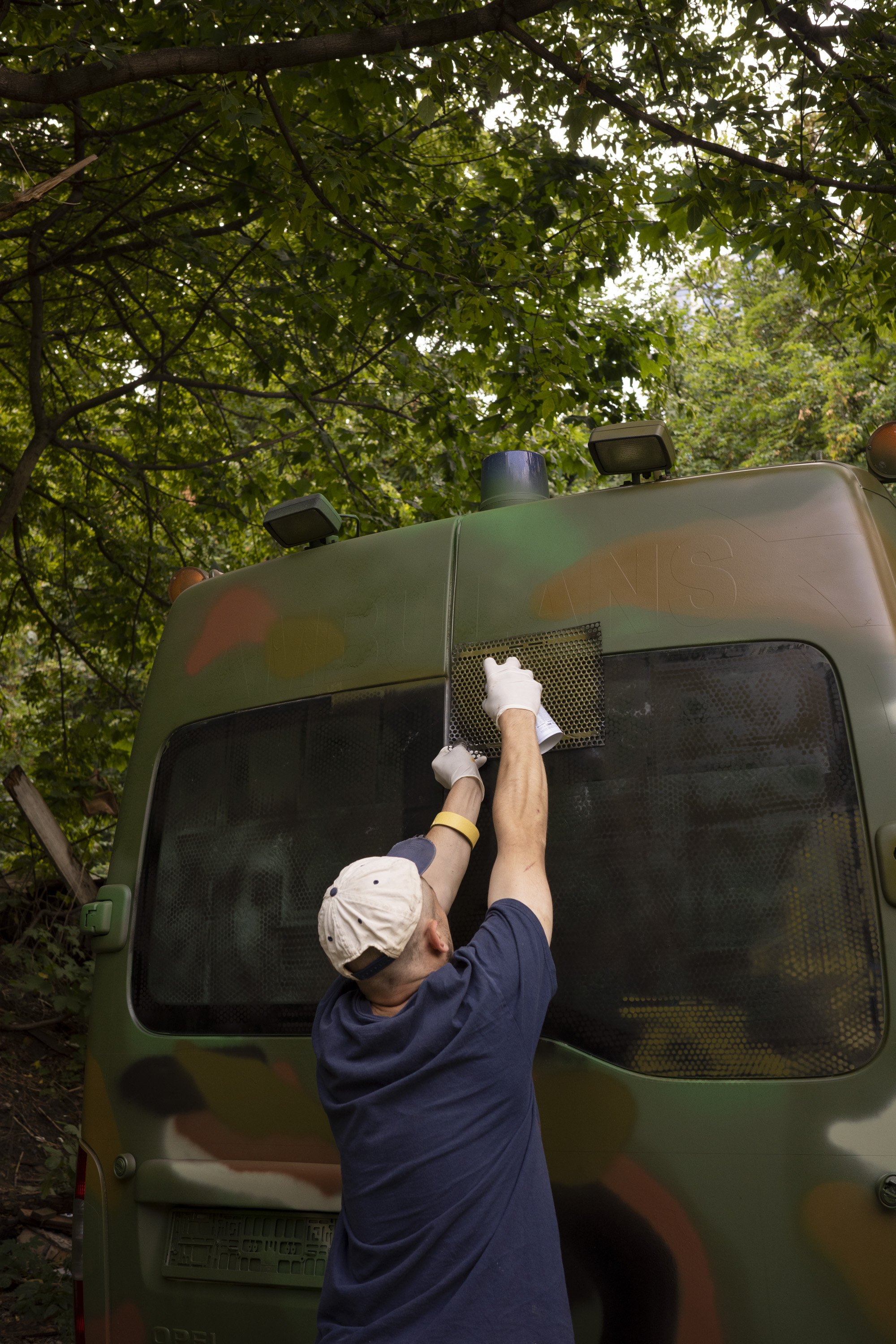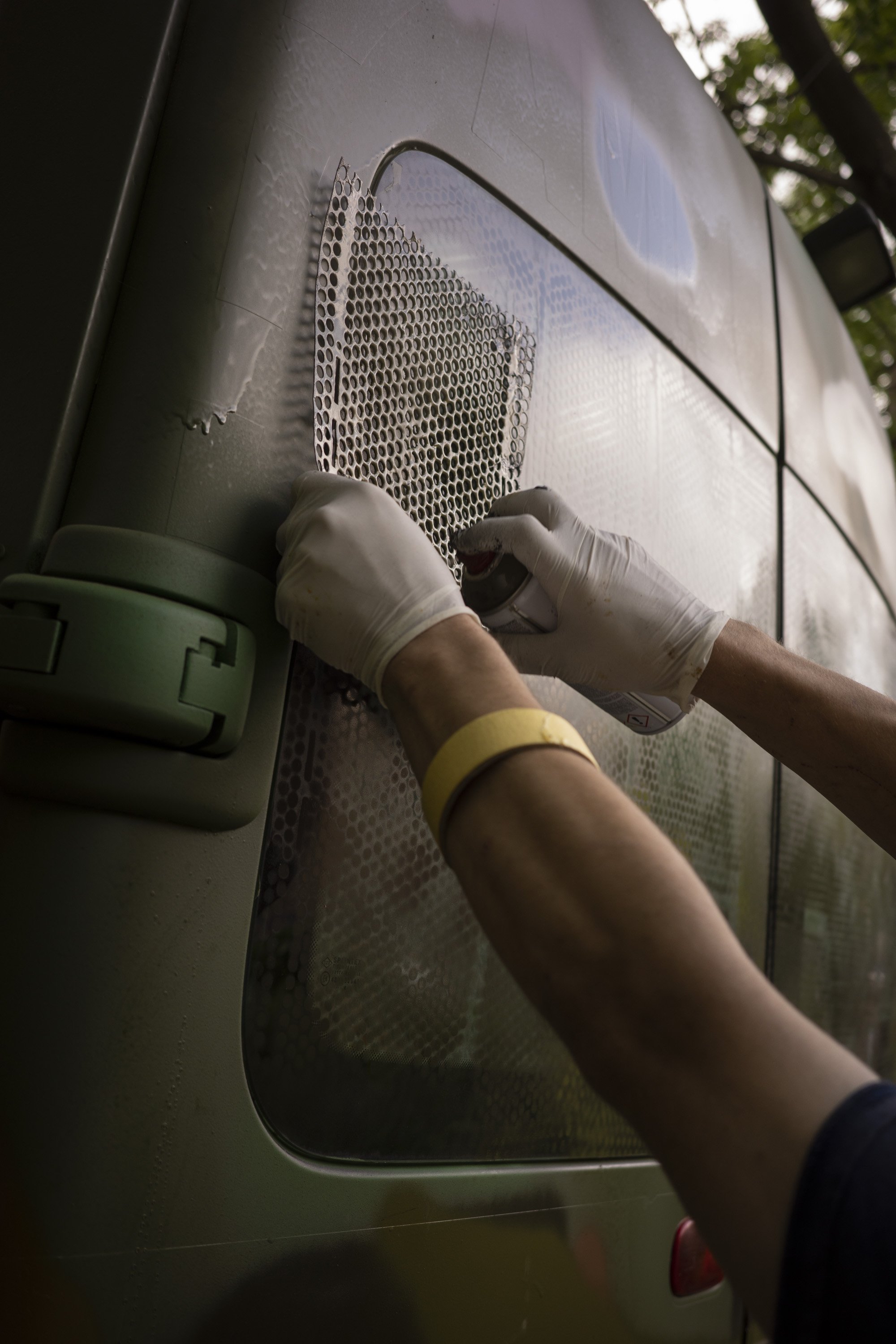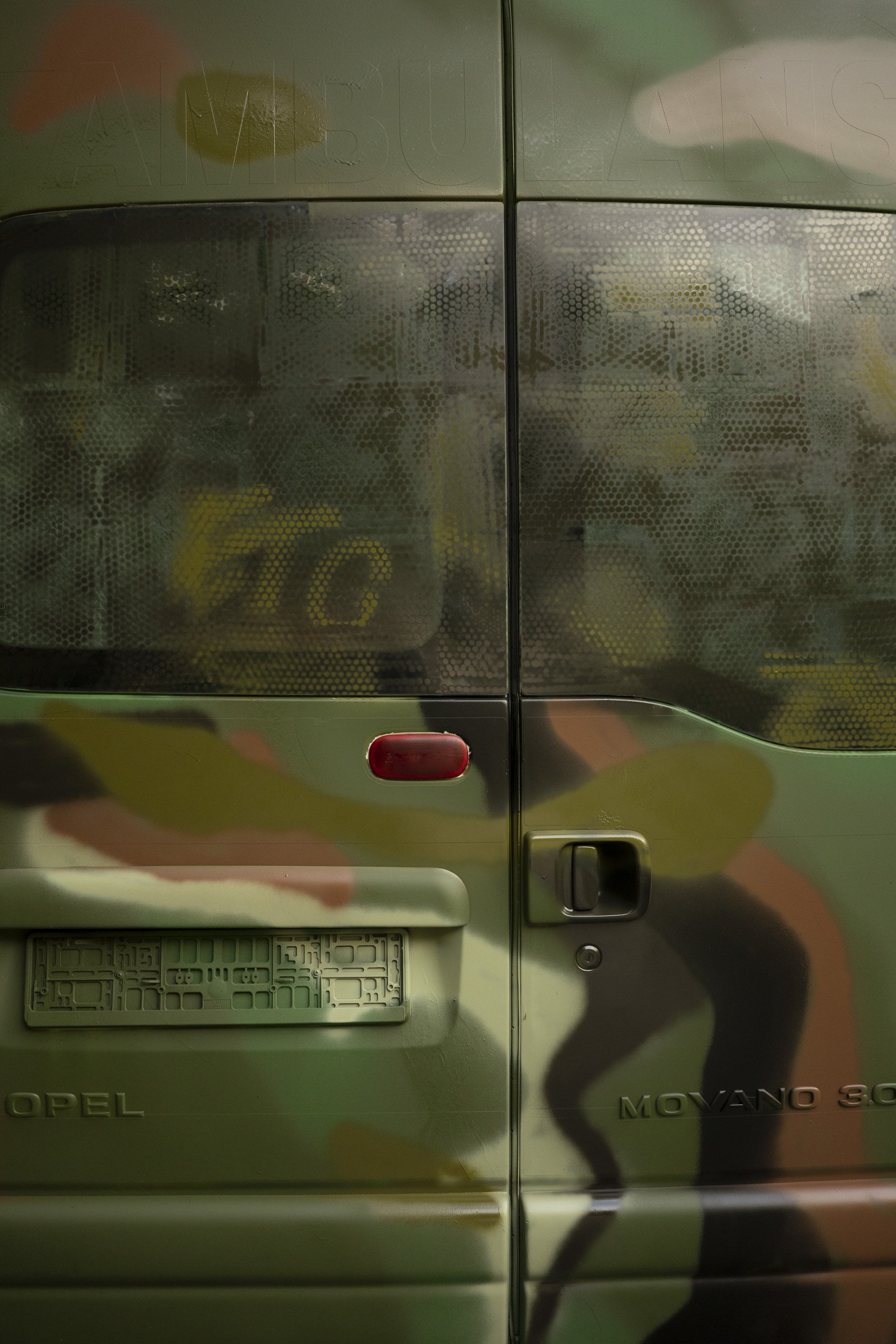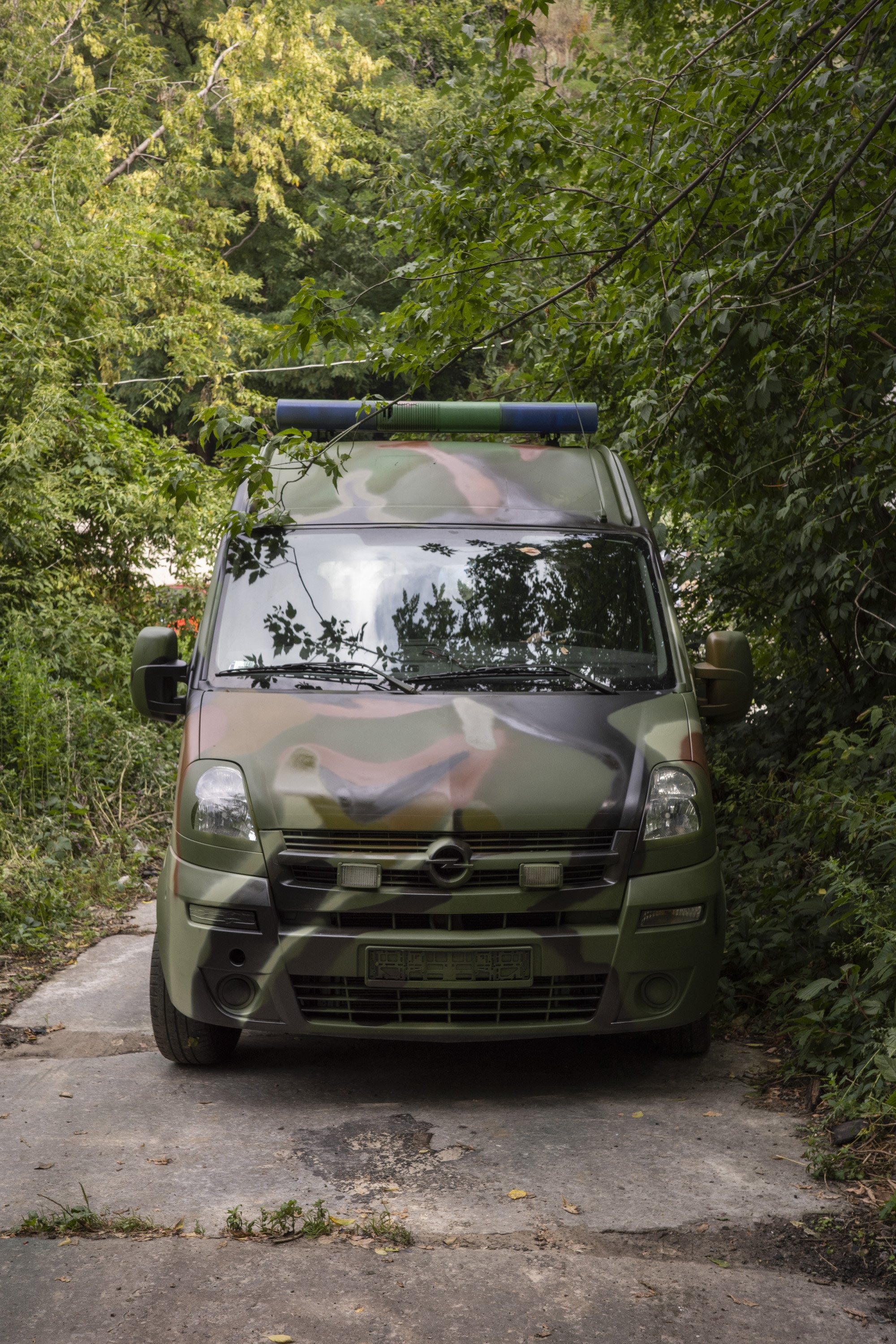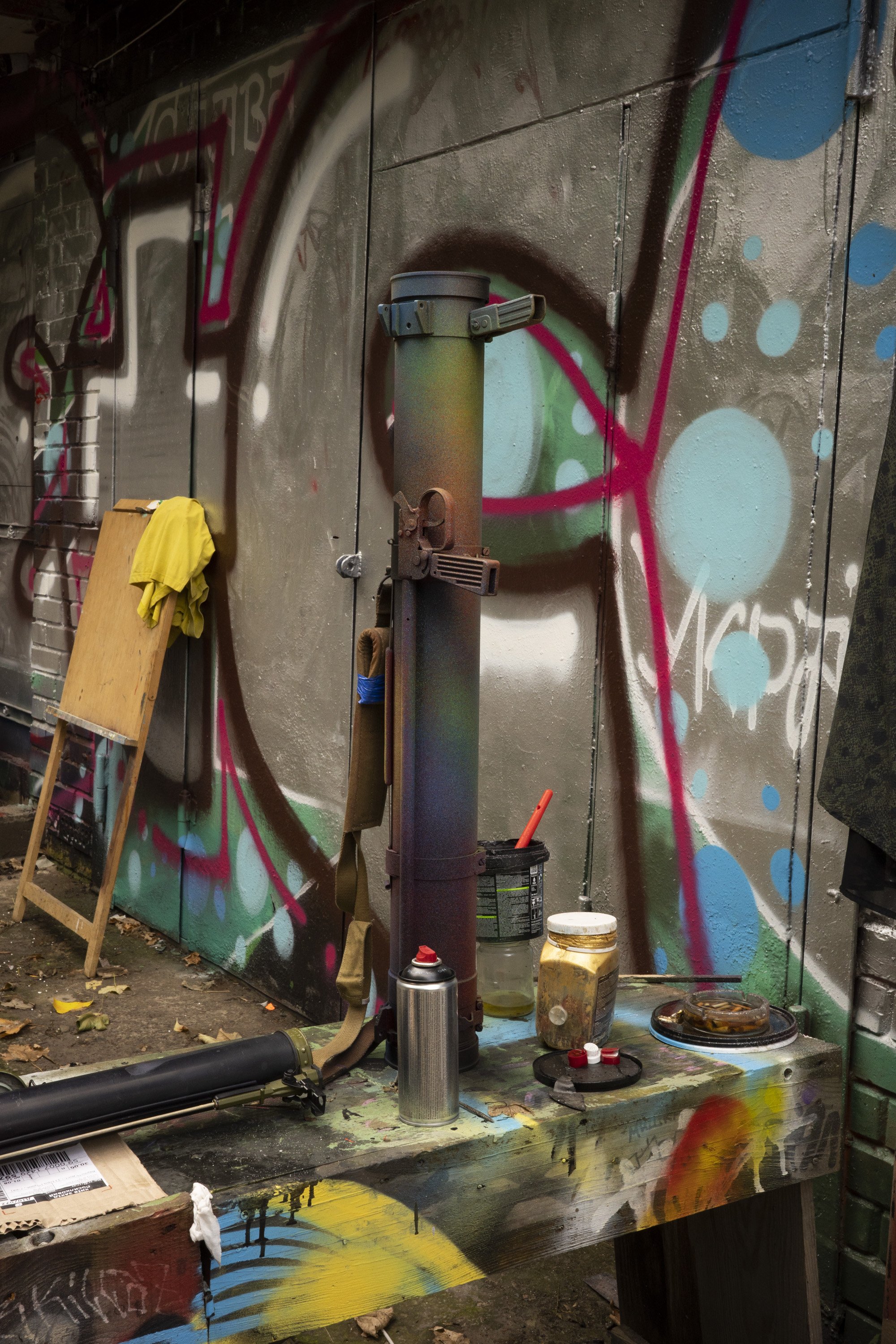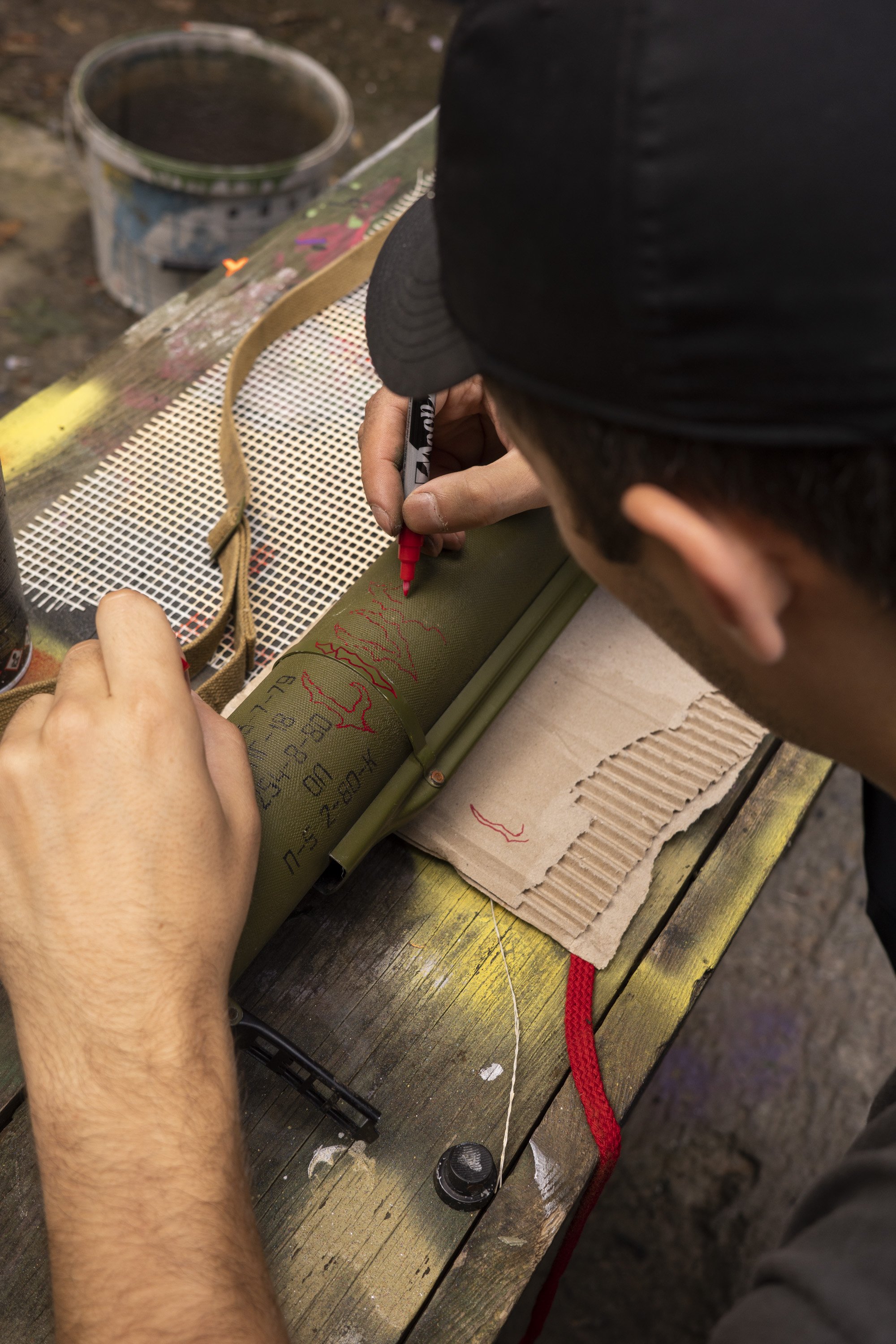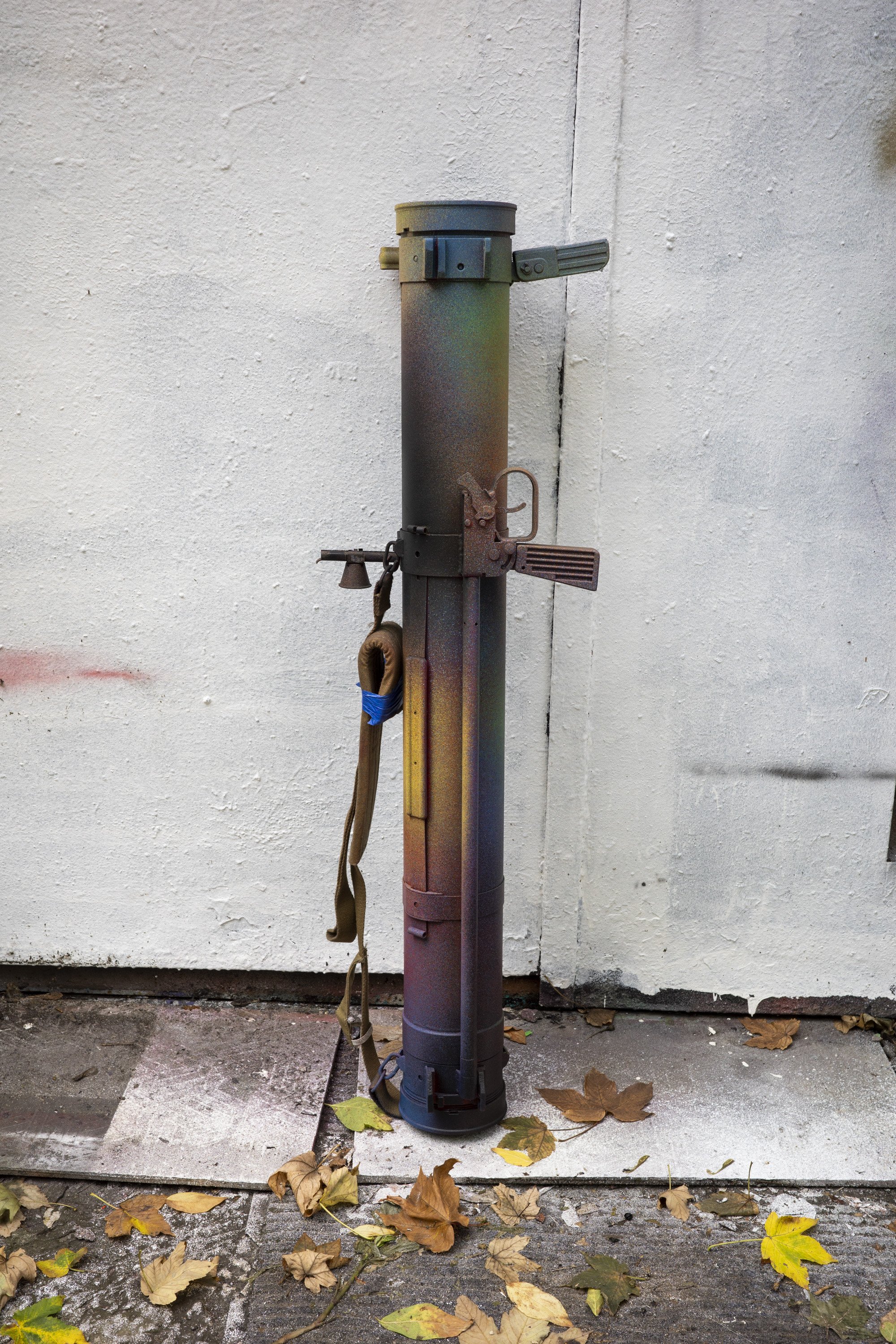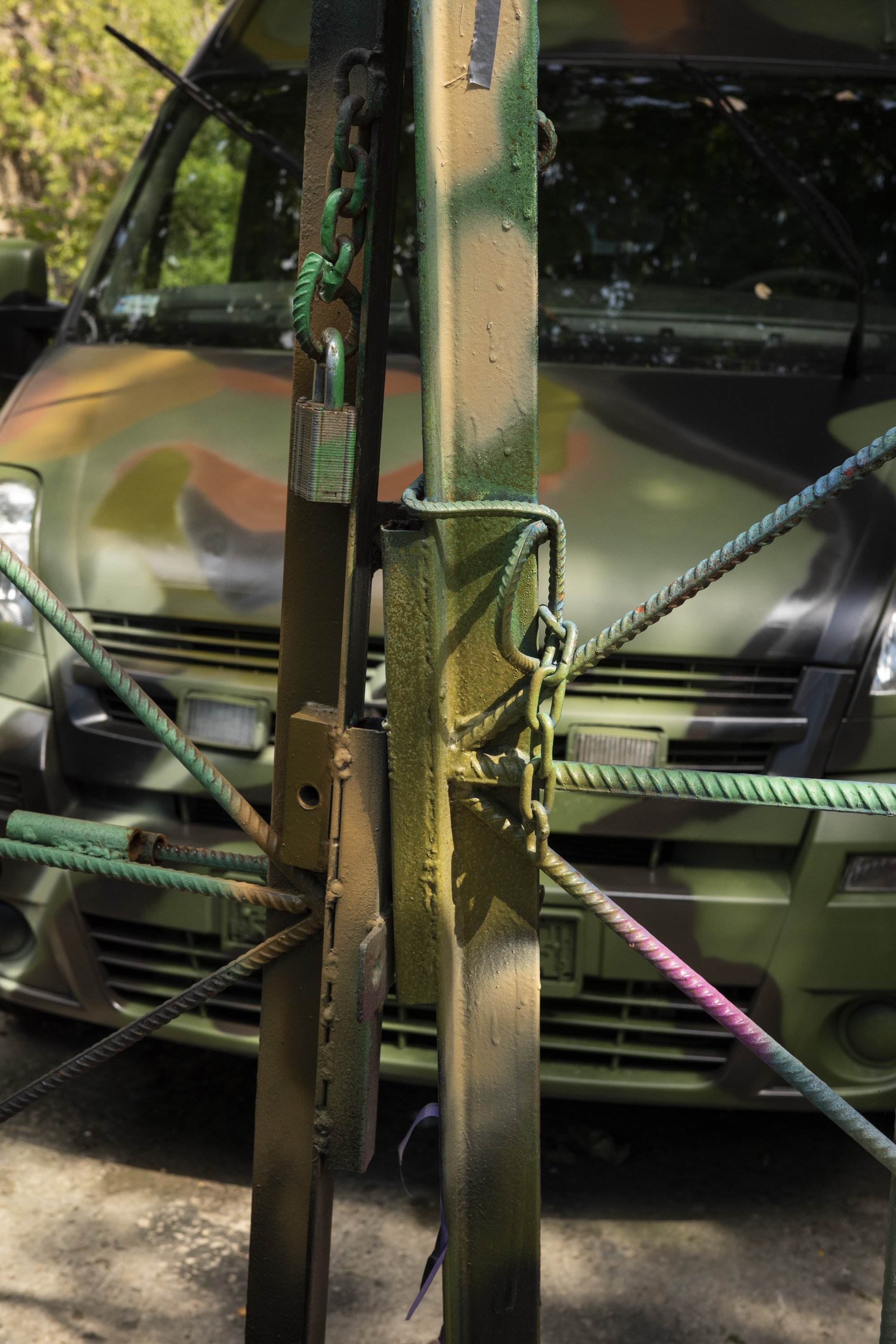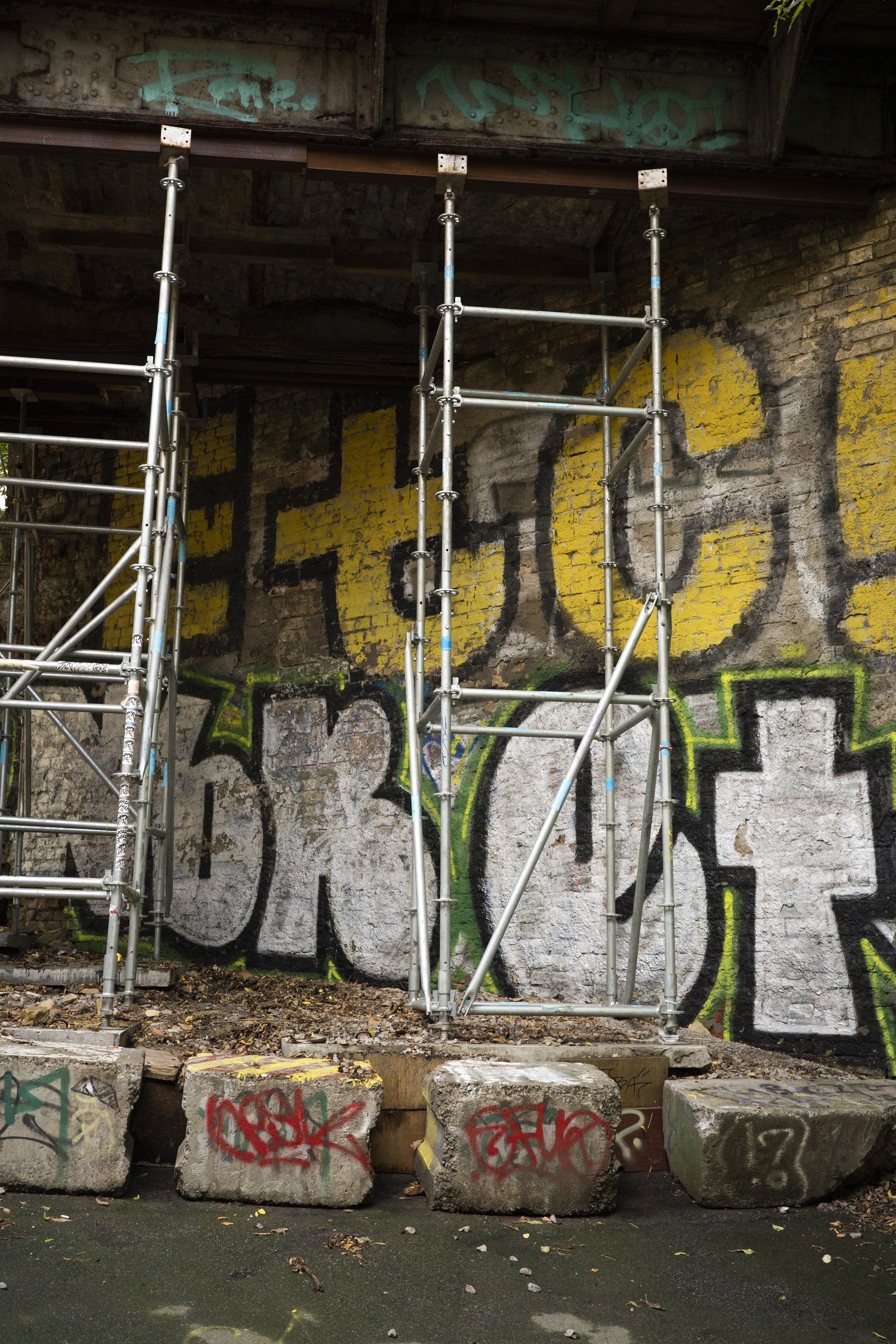Invisible to the enemy
How can graffiti become useful in war?
Photo series by Lesha
© Lesha
Invisible to the enemy. A team of graffiti artists from Kyiv paints camouflaged* military cars for the front for free. During the war, this project replaced their usual street creativity. The "Erase the city" (ETC) team opened their “garage” for us to show how it works to “mask” automobiles.
*Camouflage: a way of masking, characteristic of military uniforms, weapons and equipment. Special patterns and a color range close to natural helps to disguise the car against the background of the environment and literally blend in with the situation. The first camouflage in the world was the color "khaki" during the Anglo-Boer War (1899-1902).
Neak has been painting graffiti since 1994. They established a crew of like-minded people in 2009, called ETC. However, the work of the artists, which painted city walls and streets in bright colours, was completely overshadowed by the war from February 24. But the guys from ETC have not lost their creativity. Bright arts have been replaced by pastel and dark colours. Now, they paint military cars for the Ukrainian army. In their own workshop, they work overtime and on weekends. The guys are convinced that helping the army is necessary now. Three men out of his team are already fighting on the front line: "When the war started, everyone from our team was looking for ways to help and be involved. Once, our friend from the east front said that the soldiers from his unit were waiting for a car that was brought to them from Europe. I offered to make camouflage on it. It was the first car we painted".
After that, hundreds more requests appeared. Word of mouth worked, and the guys began to paint the cars one by one. Almost every day, the team gets 2-3 cars to work with. Some tasks even have to be done at night. “It often happens that we need to paint the car from one day to another, even within hours sometimes - and we do not refuse anyone, this is important for us,” says Neak “Most of the time is spent preparing the car because you can’t just take it and paint it, you have to glue the windows and headlights. Sometimes commandos ask to glue only part of the headlight or reflective elements or make them matte. There are a lot of nuances".
On average, volunteers spend three to four hours per car. Professional soldiers help them understand the features of camouflage. The background painting is made with automotive enamel and the rest with aerosol cans. For instance, the body of a car cannot simply be filled with green. It is necessary to take into account the terrain on which a car is driven, the season, the landscape, even the colour of the trees and grass.The forest pattern, for example, consists of a combination of large patches of beige and black shades, applied over a swamp green base colour. Sand camouflage is called "desert storm". The main shades here are brown, yellow, and beige. It combines small white, light brown and burgundy spots. For winter, medium-sized spots of gray, white and black, blurring on a light background, are combined. "If, for example, the military work in the south, where there is a steppe and no greenery, we choose more colours like brown, beige and just a little green. If it’s a green area, the main colours are khaki and shades of green. You can just take a look at the uniforms of soldiers and choose from 4 to 8 colors", Neak explains.
Painting the car can get expensive: "If you paint only with spray cans, 10-18 cans are used per car, depending on the model. But it is not economical. Friends collected for us and we received donations. With a new compressor, we now paint the basis of the car's enamel from a gun and the details with spray cans. On average, painting a car costs us UAH 1500-2000 (EUR 40-50) - just for the materials".
Most of the expenses are covered by the guys from their own funds. Neak recalls that in the first months of the war in Ukraine, there was a huge lack of camouflage colours. Such shades are usually not very popular among graffiti artists. The team had to adapt to this somehow. "Once an intelligence officer turned to us for help. His car was painted unsuccessfully. It was probably intended to be coloured in beige but when the paint dried, the car turned out to be pink. Going to war in a pink car is not very appropriate - as you can imagine. So he drove the car to us and we fixed it."
In the final step, only matte coating is used for military cars. Because even the smallest ray of the sun on a glossy surface can give a glare, after which it is worth waiting for the "arrival" of enemy artillery. However, cars painted in the right way are difficult to notice not only on the battlefield, but from the sky as well. "Some guys checked whether our camouflage was visible from a drone and were satisfied with the result. But in general, such cars do not "live" for long. Some of them are destroyed already on the second or third day at the front line. That is why the flow of used cars from Europe does not stop now."
Volunteers are most in need of financial support right now, in particular for consumables such as paint and tools. Despite the overload, Neak assures that the team will continue volunteer work as long as the military has a need for it, until the victory of Ukraine. After all, every camouflaged machine, invisible to the enemy, can save a life


